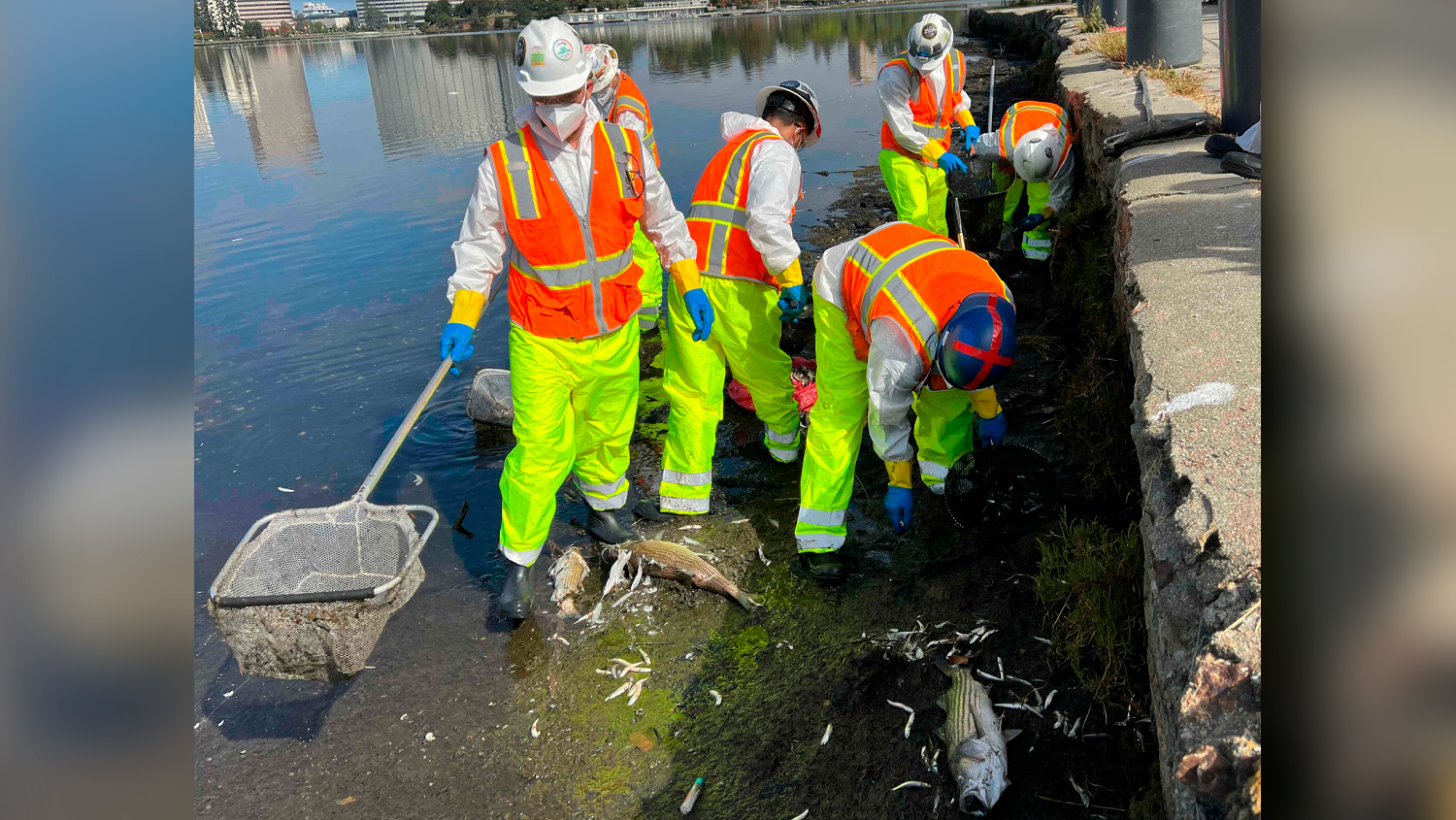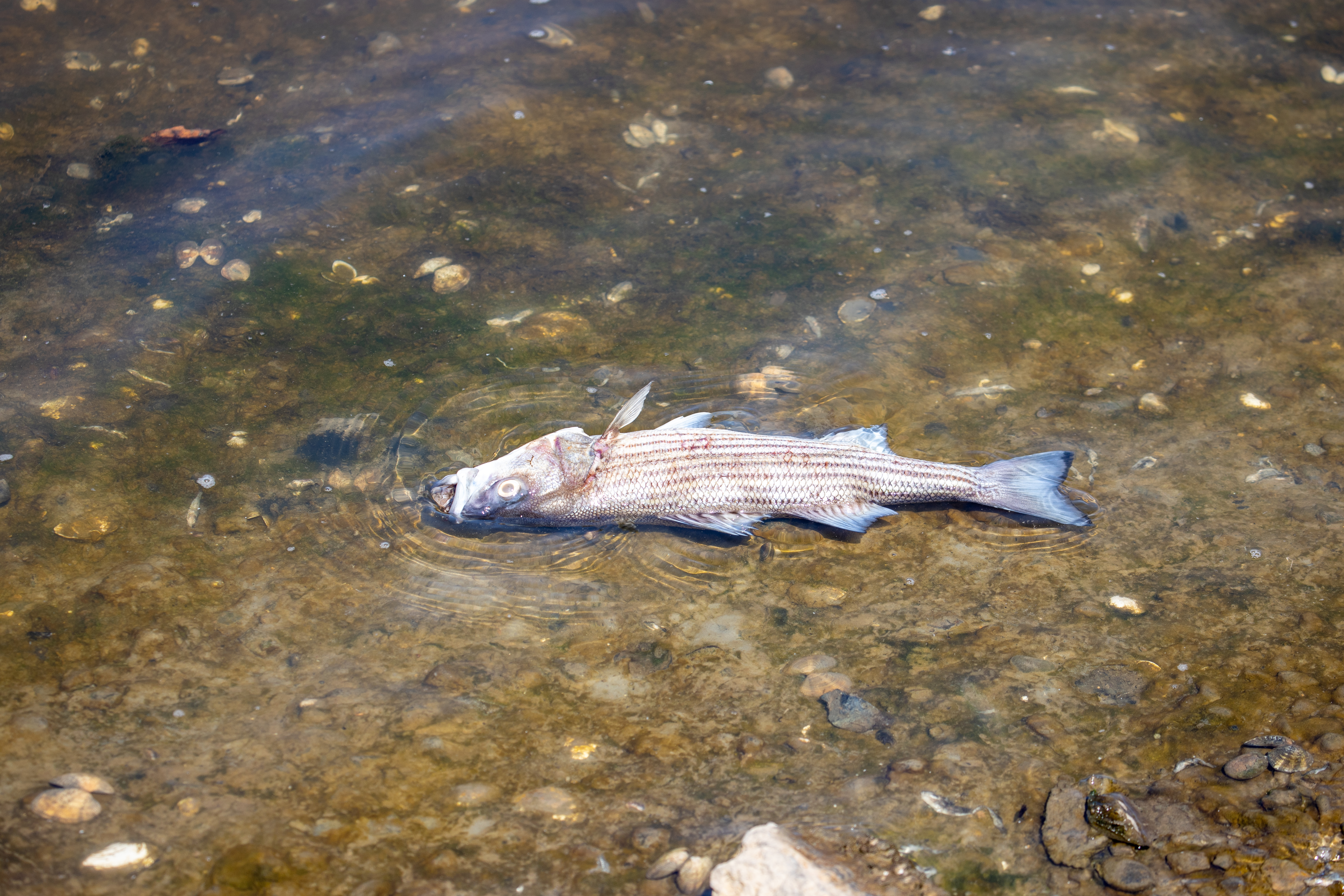While what is being called a massive harmful algal bloom stretching across San Francisco Bay appears to now be in decline as of Saturday, state and regional water resource officials say depleted oxygen levels caused by the algae could lead to large-scale aquatic deaths in the days ahead.
That is the warning, according to the California Water Resources Control Board, the San Francisco Regional Water Quality Control Board and the California Department of Fish and Wildlife.
Better known as a "red tide" since the algae bloom has turned much of San Francisco Bay into a reddish-brown color, the algae bloom was first detected in Alameda in late July and has grown to become the largest in the bay's recorded history.
Already, it has been responsible for the deaths of thousands of fish, including large sturgeon, sharks, striped bass, bat rays and anchovy. While this type of algae bloom is not considered a health threat to humans, it is recommended that people avoid swimming until further notice. The cause of the algae bloom remains unknown.
"It's very upsetting to see the scale of harm to aquatic life and we know how disturbing this has been for the public," said Eileen White, executive officer of the San Francisco Regional Water Board. "We are doing everything possible to monitor the situation, work with other agencies and search for solutions."
At Oakland's Lake Merritt -- which is connected to San Francisco Bay -- reports suggest as many as 10,000 fish died in late August. On Aug. 29, San Francisco Bay Regional Water Board staff conducted a field investigation at Lake Merritt, where very low dissolved oxygen levels were measured in the water. Water samples were collected for identification of algal species and toxins.
State Department of Fish and Wildlife officials will conduct boat and shore-based surveys next week at various locations around San Pablo and Suisun bays. The goals of these surveys will be to determine the geographic extent of the fish kill, any expansion into new areas, the species affected and the numbers of dead fish on select target species such as white and green sturgeon.
The officials will also track reports from partners and community scientists to determine where fish mortalities are occurring. Due to the likelihood of increased fish mortalities during the Labor Day weekend, fish and wildlife officials are encouraging people who may be recreating on the nearby shorelines in affected areas to report sightings of dead fish through the iNaturalist smartphone app.
The water boards have worked with various agencies, including the city of Oakland, Alameda and San Mateo counties and the East Bay Regional Park District to post caution advisory signs near affected waters, including Lake Merritt, the Oakland Estuary, Coyote Point, and Crown Beach, to inform the public about avoiding contact with the discolored water caused by the red tide.
Get a weekly recap of the latest San Francisco Bay Area housing news. >Sign up for NBC Bay Area’s Housing Deconstructed newsletter.



